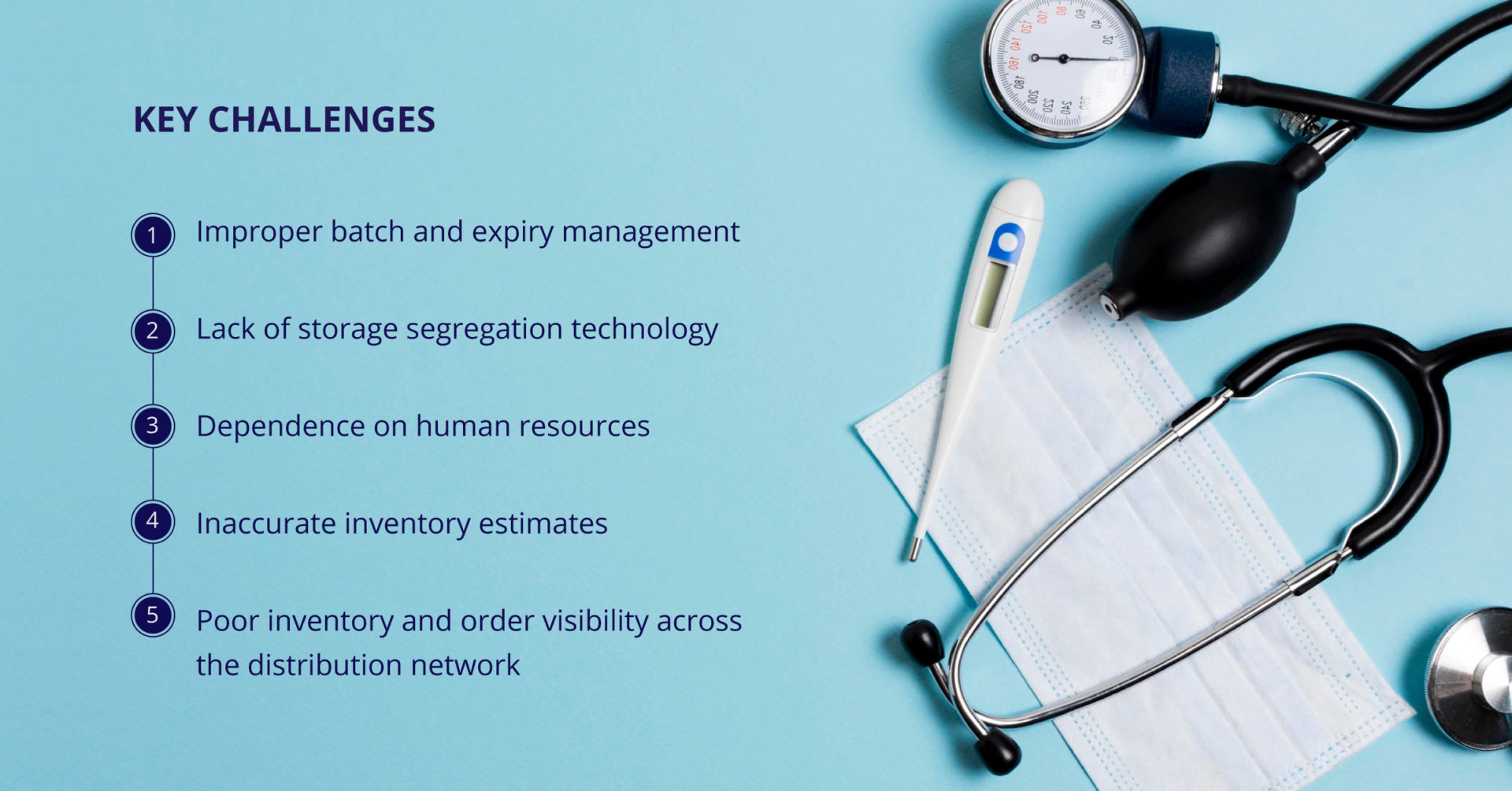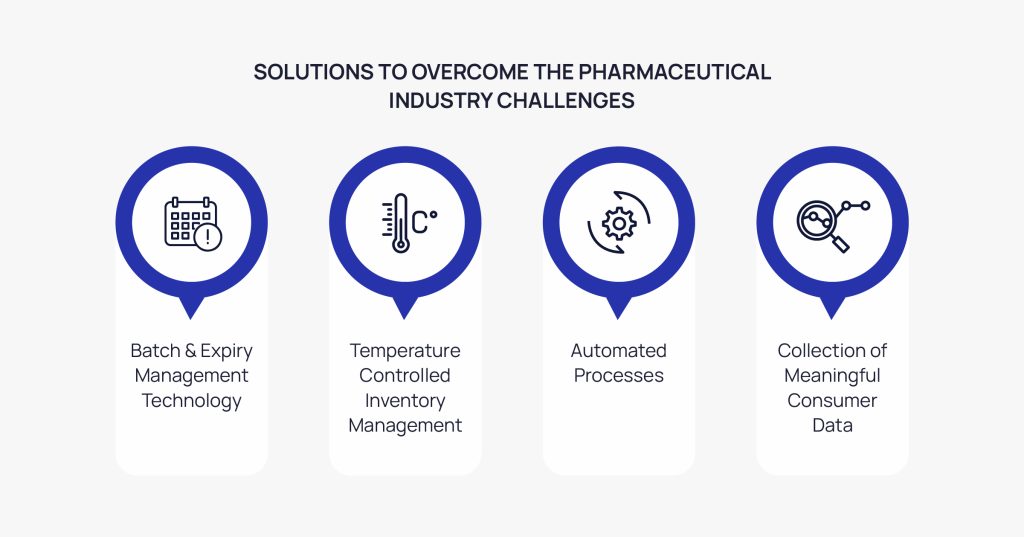
1. Introduction to pharma e-commerce
The pharmaceutical industry has significantly evolved over time with research and technological developments. At the same time, through experimentation and trials over the years, more potent cures, treatments, and drugs are now available, which have made the pharmaceutical business a multibillion-dollar industry.
The global pharmaceutical market was valued at about $1.7 trillion[1] in 2024. And it continues to grow as the latest research offers new remedies for prevailing ailments. As of 2024, the US remains the world’s largest pharmaceutical market, accounting for 52%[2] of total global market sales. This expanding market is now experiencing a major shift driven by digital innovation, paving the way for the booming pharma e-commerce industry.
2. What is driving the growth of the pharma e-commerce industry
The overall pharmaceutical industry is doing well today, given its expansion and worth. In fact, it’s poised for even greater growth in the coming years, due to these 3 advantages of the pharmaceutical industry:

a. Availability of improved medication
Due to the improvements in science and technology, better medications are being introduced regularly to fight incurable and persistent illnesses. Oncology, immunology, and diabetes medicine are the top three sectors that have seen the largest spike in new drug development. These are also the most common areas of illness today.
This global oncology market is expected to reach approximately $903.81 billion by 2034, with a CAGR of 10.9%[3]. And the availability of suitable medicines will boost the pharmaceutical industry’s sales.
b. Growing number of ailments and older population size
As the number of illnesses and diseases is on the rise, the demand for medication is higher than ever. According to research (in America), six in ten adults[4] say they take at least one prescription drug and a quarter say they take four or more prescription medications.
The growing number of seniors is also boosting the demand for medications. As per World Population Prospects by the United Nations, the number of persons at ages 65 years and higher globally is projected to reach 2.2 billion by the late 2070s[5], surpassing the number of children (under the age of 18). With more people reaching seniority, the need for medications increases to cope with age-related health conditions.
c. Demand for online pharmacies
According to reports, the global online pharmacy user penetration will be 13.07% in 2025 and is expected to cross 16.16% by 2029[6]. This is a major feat for e-pharmacies.
The main reason why people are warming up to online pharmacies is because of the convenience e-commerce pharma provides like doorstep delivery for the elderly or scheduled prescription refills so they don’t skip their medication. Buying medicines online also ensures privacy and a seamless purchasing experience. These factors encourage more people to purchase pharmaceuticals online.
3. Key e-commerce pharmaceutical business challenges
Whether it is online retail, offline retail, or both, pharmaceutical brands, distributors, and 3PLs are seeing impressive demand. On account of this, pharmaceutical vendors and brands need to prepare now to keep up and successfully compete with the expanding market.
Diving into existing and future business challenges is the perfect place to start the preparations. Thoroughly analyzing pain points will reveal why they exist and make it easier to overcome them.
Here are some of the key challenges in the pharmaceutical industry today:

a. Improper batch and expiry management
Pharmaceutical brands, distributors, retailers, and other dealers all require a system to manage product batches and their expiry. But as this is often done through a manual process, it results in certain items being overlooked or unaccounted for. Sadly, this causes wastage as products with a shorter shelf life may be skipped and passed their expiry date before they are even shipped.
Besides, manual inventory management is difficult to harmonize and a big recurring expense. And if the task of inventory management is inefficient, costs will be much higher for the brand, distributor, and other businesses in the supply chain.
b. Lack of storage segregation technology
Warehouse segregation is crucial when handling medical products that need specific storage conditions (for example, a dark space, refrigeration, etc.).
This segregation is useful to direct warehouse staff during inbounding and outbounding processes. It ensures they are aware of the special conditions and care that certain products need when they are stored, moved, or transported.
Many pharmaceutical brands, warehouses, and distributors lack the tools and technology to manage these segregations. And in the event of high employee turnover, it becomes difficult for new employees to learn the requirements of all the products in stock. This translates to poor handling of temperature-controlled products, wastage, and longer fulfillment time.
Fragile medical vials and solutions that are sensitive to light, need special storage and handling directions too. But businesses that do this manually may experience breakage, loss of potency, and wastage of such products. The reason is that their staff is unaware of how to handle and store these products.
c. Dependence on human resources
As discussed, managing the inventory and orders for pharmaceutical products is usually done manually, so the dependence on human resources is high. But because most of the processes are done manually, there are more chances of errors, higher costs during expansion, and employee turnover.
These outcomes can negatively impact the quality of inventory and order management and the ultimate fulfillment of orders.
d. Inaccurate inventory estimates
From time to time, pharmaceutical brands and distributors need to quantify stocks and replenish inventory based on demand. In the pharmaceutical industry, it’s difficult to determine the demand for medicine because most illnesses are not seasonal.
To gauge the demand for particular medicines, pharmaceutical companies don’t have access to historical sales data. Often with a tiered distribution model, it’s difficult to ascertain accurate sales information as communication is lost between brands and retailers.
Without precise sales data, inventory replenishment and planning will rely on assumptions. If these assumptions lead to insufficient inventory, new orders may be partially fulfilled, delayed, or completed inaccurately.
e. Poor inventory and order visibility across the distribution network
There are a variety of medical substitutes for the same symptoms and conditions. These products differ based on ingredients and price points. This may cause variations in sales. Establishing which products are doing well and which aren’t is a big challenge.
If a brand sells through a tiered distribution network, it may find it incredibly tough to distinguish on which channels its products are prospering and on which ones they aren’t. Identifying best sellers will be just as challenging.
Most brands lose visibility after sellout with the tiered distribution. As a result, they are unaware of how much of their products are actually sold, how consumers are reacting to their products, and which sales channels are doing the best with their products.
4. Solutions to overcome the pharma e-commerce industry challenges
Pharmaceutical businesses tired of the above hurdles may have tried different solutions to overcome them. But, the most effective way to break free from the key challenges in the pharmaceutical industry is to employ reliable technology.
Here are a few technological solutions that directly deal with the struggles discussed above by simplifying processes and eliminating errors and stress:

a. Batch and expiry management technology
To minimize wastage, a Warehouse Management System with batch and expiry management technology is crucial. Batch management technology is handy for pharmaceutical companies due to the traceability they offer for each product.
Businesses have to trace all products moving in and out of their warehouses and stores. That way, they know where each product is and from which batch they are.
Managing product expiry is equally essential to ensure products closest to expiry are sold first. With a sophisticated Warehouse Management System, it’s easy to keep track of the best before dates. These systems also help create stock rotations like first-in, first-out (FIFO), last-in, first-out (LIFO), or first-expired, first-out (FEFO).
b. Temperature-controlled inventory management
Warehouses managing a broad range of pharmaceutical products often require special storage segregations for temperature-controlled storage. The potency of medicines with special storage needs is greatly impacted by their storage conditions and therefore, optimum care must be taken when storing and handling these products.
But, as most warehouse operators aren’t pharmacists, there may be negligence that could lead to improper storage and handling of products. To prevent this, a Warehouse Management System (WMS) with inventory segregation features is the perfect fit.
Through the inventory segregation module, warehouse and pharmacy companies can separate their inventory into temperature-controlled inventory, exposure-controlled inventory, and normal inventory.
A WMS with a pick-by-section feature is essential to create different product sections based on storage requirements. That way, when orders come in they will be assigned to pickers in the appropriate storage section.
With these separations, it’s easy for warehouse staff to determine exactly where certain products should go and how they should be handled during fulfillment.
c. Automated processes
To manage pharmaceutical inventory and retail, the best technologies to acquire are an Order Management System (OMS) and a Warehouse Management System (WMS). These systems help automate different processes like order processing, inventory management, stock identification, stock assessment, and inventory planning.
A WMS can transform any warehouse into a smart warehouse by managing inbounds smoothly with intelligent receiving and quality control, Purchase Order Number (PON) and Advance Shipment Notice (ASN) management, and programmable putaway workflows.
Reliable WMS technology will even automate efficient pick-pack strategies (FEFO, FIFO, wave, zone, and more). These strategies can be implemented using handheld devices to speed up dispatch and reduce shipping errors.
With an OMS, brands, distributors, and retailers can automatically sync orders from integrated platforms and centralize inventory for all sales channels.
d. Collection of meaningful consumer data
Getting the right OMS can be incredible for product visibility. The perfect system will allow brands and distributors to integrate with the channels their distribution network is using. That way, they know where most of their sales are coming from and which channels aren’t performing well.
A great OMS offers real-time insights into consumer behavior and response based on different demographics. This is vital information for marketing, promotions, and inventory replenishment.
Investing in competition assessment technology is another aspect to look into. This will provide insights into what competitors are doing and how. Brands can accordingly compare their strategy and make adjustments to capture the market or stand out.
5. Common Mistakes to Avoid in Pharma E-commerce
Even with a clear understanding of the challenges, it’s easy for businesses to stumble during implementation. Avoiding these common missteps is crucial to succeed in pharma e-commerce:
a. Poor User Experience (UX)
One of the most significant missteps in pharma e-commerce is a website or app that’s difficult to use. A clunky interface, slow loading times, or a design that doesn’t adapt to different devices will inevitably frustrate customers, leading to abandoned carts and lost sales. In an industry where trust and clarity are vital, a seamless and intuitive online journey is necessary for retaining users.
b. Inadequate or misleading product information
Without comprehensive and accurate product details, consumers will hesitate to make a purchase, losing confidence in your online pharmacy. Customers need clear, understandable information on dosage, potential side effects, and ingredients, along with high-quality images of the product.
c. Inefficient shipping and delivery processes
The delivery aspect of pharma e-commerce must be straightforward and efficient. Hidden shipping costs, limited delivery options, or a lack of real-time tracking can quickly erode customer satisfaction. Given the sensitive nature of medication, timely and reliable delivery is a critical expectation that directly impacts trust and repeat business.
d. Overlooking customer support and communication
Customers need easy access to assistance, whether through live chat, phone, or email, to address inquiries about products or orders promptly. A lack of proactive communication regarding order confirmations and shipping updates can cause anxiety and reflect poorly on the overall service.
e. Neglecting future growth and scalability
Even if your current setup works now, failing to think about how you’ll handle more orders and products as you grow is a big error. You’ll quickly hit roadblocks, leading to delays, mistakes, and lost sales. A scalable solution is key to handling rising order volumes and new sales channels without slowing down or requiring a massive increase in staff.
6. Pharmaceutical e-commerce regulations and limitations
Digital commerce is changing the pharmaceutical industry in a positive manner. Consumers find it easy to purchase their medicines online and appreciate not having to wait in line.
e-commerce is proving to be fruitful for pharmaceutical companies too. Through digital platforms, they can sell directly to buyers, understand their target audience better, and provide customized services.
However, when it comes to selling medical drugs or over the counter pharmaceuticals, most governments and marketplaces have a few restrictions in place. That’s because several unregistered retailers sell medicines online at lower prices, and these products could potentially be dangerous to consumer health as they might be outdated, diluted, or fake.
Let’s take a look at the kind of intervention and restrictions currently in place for the pharma e-commerce market:
a. Government intervention
To prevent the circulation of expired, diluted, or fake medicine, governments and regulatory bodies across the globe have also set standards to monitor products sold by online pharmacies and marketplaces.
In most cases, without an FDA (Food and Drug Administration) license, online retail platforms cannot legally sell drugs (medicines) online.
Pharmaceutical companies looking to sell non-medical products through online marketplaces like Lazada, Amazon, or Shopee, must go through their prohibited and controlled product policy to determine which products they can sell under this category. Avoiding this step can lead to rejection from the marketplace and even penalization for misrepresentation of products.
b. Requirements to sell pharmaceuticals online
Pharmaceutical distributors interested in selling through online pharmacies or setting up their own e-pharmacy will need a:
Physical pharmacy
Drug retail license
Registered pharmacist
Temperature-controlled storage space
These prerequisites may vary from country to country. But, globally, e-pharmacies must be registered, have a licensed pharmacist, and have the capacity to collect prescriptions from patients for the sale of prescription medication. Similarly, when selling over-the-counter (OTC) drugs, the business must have the right license for the same.
c. Regulatory bodies overseeing e-pharmacies in different countries
In the UK, online pharmacies can register with the General Pharmaceutical Council (GPhC)[7] and publish the GPhC logo on their website to prove they are a legitimate online pharmacy selling genuine medication. Consumers can check the GPhC register to see if an online pharmacy is legally permitted to sell medicine.
For Singapore, the Health Sciences Authority (HSA[8]. regulates the sale of pharmaceuticals through an e-pharmacy directly to the patient. It determines the requirements and the standards that e-pharmacies must follow.
Over in Malaysia, the Ministry of Health Malaysia (MOH)[9] oversees the sale of medicines on offline and online platforms. Prescribed drugs cannot be sold online in Malaysia[10]. Only drugs categorized as over-the-counter (OTC), traditional and health supplements (with MAL No. ending with X, T and N) can be sold online in this country.
In the Philippines, selling medicines online is NOT permitted according to existing laws, rules, and regulations. Patients can order medicines online provided the seller has an FDA-licensed pharmacy or a Botika[11] with a physical address. Offering online purchasing or selling services is considered an additional activity of a pharmacy or Botika. Therefore, it is subject to the approval of the FDA.
7. Top pharmaceutical industry trends
The pharmaceutical industry is continuously changing as human needs and ailments evolve. This continuous change has significantly impacted the pharma retail sector giving rise to key trends in the pharmaceutical industry that are reshaping consumer behavior and business strategies, particularly within the e-commerce space.
The two most impactful ones to ponder on are these:
a. Desire for convenience through prescription refill services
As more patients warm up to the concept of online pharmacies, they expect added convenience. Some offline pharmacies or medical establishments provide refill services and the same is being expected from online pharmacies.
For example:
In the US, online pharmaceutical platform Pill Pack by Amazon Pharmacy[12] offers subscription or refill services.
In Singapore, HealthHub[13], the national population enablement platform for digital health, performs online transactions for refilling medication among other services for users.
With a refill subscription, pharmacies will receive auto-generated orders every month or week. They also skip long lines and the hassle of traveling to the pharmacy. Their online subscription pharmacy will ensure they receive their medication at their doorstep in a timely manner.
As more online pharmacies implement the subscription model, it will become a necessity for patients.
What does this mean for brands?
Collecting customer data to determine purchase frequency
Investing in an inventory management system to allocate stock for assured orders
Creating product promotions to make the most of loyal customers
“If a brand offers customers loyalty cards or subscriptions, they can know more about their customers when they shop and encourage monthly purchases. Moreover, they can direct their customers from marketplaces to their web stores,” says Vishal Desai, Chief Revenue Officer, Anchanto.
b. Hyper-personalization driven by AI
AI is set to revolutionize e-commerce by offering highly individualized experiences in pharma. This involves leveraging AI to analyze patient data (with strict privacy protocols) to provide tailored recommendations for medications, dosages, or complementary health products.
McKinsey projects that generative AI could yield $60 billion to $110 billion annually in economic value for the pharma and medical-product industries[14]. This significant impact is largely driven by AI’s capacity to foster more personalized treatments and improve patient outcomes. Gen AI tools like chatbots can also enhance this by offering instant, personalized advice and streamlining prescription processes, leading to more consistent patient care.
What does this mean for brands?
- Invest securely in AI capabilities that can process and interpret health-related data
- Utilize AI to personalize product suggestions and enhance customer service
- Ensure platforms can handle complex data sets and integrate AI tools for a better user journey
8. Key Considerations to Optimize Pharma E-commerce Operations
Operating an e-commerce business for pharmaceutical products demands precision, strict regulatory adherence, and robust systems. Whether you’re selling on a third-party marketplace or managing your own platform, selecting the right tech and applying smart operational practices can make all the difference.
Here are some key considerations for building and managing a successful pharma e-commerce presence:
a. Prioritize compliance, security, and data privacy
Patient and business data are highly sensitive in the pharma sector. Ensure any marketplace or platform you use has stringent regulatory alignment for pharma sales and robust data security for sensitive health information (e.g., HIPAA, GDPR), including strong vendor vetting and audit trails. At the same time, your business must continually implement its own cybersecurity measures, automate compliance checks, and maintain digital audit trails for every transaction to safeguard patient data and avoid penalties.
b. Master specialized inventory and fulfillment accuracy
Pharmaceutical products require special handling when it comes to storage, picking, and packing. For your internal operations, you can utilize an advanced WMS to track batches, manage products by expiry (FEFO), segment inventory for special conditions (e.g., cold chain), and streamline accurate picking-packing processes for the entire order fulfillment process.
c. Ensure seamless integration and strategic data collection
Opt for inventory and order managment technology that allow convenient integrations with your ERP, CRM, sales channels, and internal systems for automated data exchange regarding listings, inventory, and order retrieval. Beyond operational efficiency, actively collect and analyze sales data across all channels to understand product performance, predict demand fluctuations, and gain customer insights for personalized marketing and smarter inventory stocking.
d. Optimize scalability, performance, and user experience
Leverage your e-commerce managment technology to handle high online sales volumes while maintaining high uptime and reliability. Concurrently, ensure your online storefront is intuitive, easy to navigate, and clearly conveys product information, dosage details, and safety warnings. This builds trust and a seamless experience, essential for health-related purchases.
9. Conclusion
Technology holds the answers to some of the most complicated business challenges. These may be existing challenges faced by the pharmaceutical industry or those about to occur on account of new behaviors and trends. Irrespective of the age of the obstacle, there is a technological solution available.
Particularly in the pharmaceutical industry, steps need to be taken to ensure all products are managed efficiently and delivered on time. Businesses involved in retail or warehousing of these sensitive products must go the extra mile to ensure smooth processes and eliminate e-commerce pharma business challenges.

Modern WMS and OMS technology have proven to provide the support pharmaceutical businesses need for safe, systematic product management and retail activities. To learn all about their impact on the pharmaceutical industry, reach out to the experts at Anchanto today.
10. FAQs
1. What is pharmacy e-commerce?
Pharmacy e-commerce involves the selling of prescription, non-prescription, or over-the-counter medications online, ordered via a website or mobile application. This modern business model offers consumers easy access to medication and the convenience of having their healthcare products delivered to their doorstep.
2. What is the future of pharma e-commerce?
As technology advances and the healthcare industry evolves, the future of pharma e-commerce looks promising. We can expect further integration with telemedicine, data-driven personalized recommendations, and the expansion of online platforms.
3. Is online pharma e-commerce profitable?
Online pharmacies can be a profitable venture due to reduced overhead costs like rent or utilities. There’s also an increase in efficiency as e-pharmacies are able to serve more customers quickly through automated processes.
References –
[1] – Biospace.com – Pharmaceutical Market Size to Surpass USD 2.82 Trillion by 2033
[3] – Biospace.com – Oncology Market Size to Surpass USD 903.81 Billion by 2034
[4] – Kff.org – Public Opinion on Prescription Drugs and Their Prices
[5] – Population.un.org – World Population Prospects 2024
[6] – Statista.com – Online Pharmacy – Worldwide
[7] – Nhs.uk – Medicines information
[8] – Hsa.gov.sg – Health Science Authority Regulatory Guidance
[10] – Pharmacy.moh.gov.my – Buying Medicines Online: Beware
[11] – Fda.gov.ph – FDA Advisory No. 2019-154 || INTERNET SALES AND ACCESS TO SAFE MEDICINE
[12] – Pillpack.com – Pill Pack by Amazon Pharmacy
[13] – Healthhub.sg – About HealthHub
[14] – Mckinsey.com – Generative AI in the pharmaceutical industry: Moving from hype to reality
